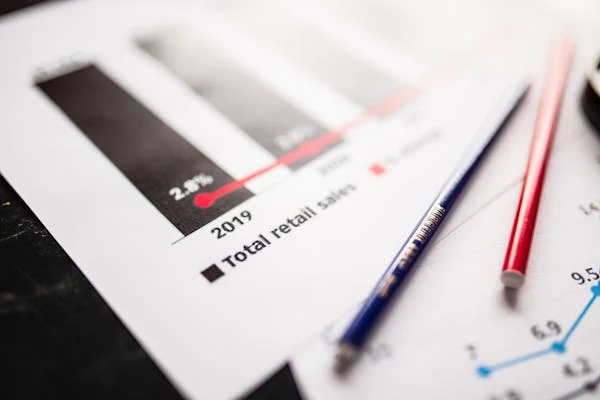The way you bill your customers—monthly or annually—can seriously impact how long they stay with you. Churn is one of the most painful growth killers, and your billing structure plays a direct role in either slowing it down or speeding it up. In this article, we’re going deep into what the real-world data says about monthly vs annual billing and how each affects customer churn. Every section is built around a real stat and breaks it down into simple, clear advice you can act on today.
1. Companies using annual billing see 30% lower churn on average compared to those using monthly billing
Why annual billing makes customers stick around longer
Annual billing locks in a customer for a longer period upfront. That commitment changes the game. Instead of monthly decisions about whether to stay or go, the customer is “all in” for a year. This reduces the chance of emotional cancellations and impulse exits. And the 30% reduction in churn proves it’s not just theory.
The psychology of longer commitments
When a customer chooses annual billing, they’re often more serious. They’re not just trying your product—they believe it’ll help them long-term. That mindset makes them more patient. They’re more likely to stick with your product through the early learning curve. And if your onboarding is solid, that patience turns into loyalty.
Tactics to encourage annual billing
Don’t just offer annual billing—make it feel like the smart choice. Frame it as the logical next step. Show how much they save. Add a bonus feature or support perk. Keep the checkout page clear and make the math easy. The goal is to make them feel confident about choosing the annual route.
2. Monthly subscribers are 3x more likely to cancel within the first 90 days than annual subscribers
Why the first 90 days are dangerous for monthly plans
When someone starts on a monthly plan, they’re often still unsure. They may still be comparing alternatives or evaluating ROI. That uncertainty, paired with the low-risk nature of monthly payments, makes early churn much more likely. Triple the risk in just the first three months is a wake-up call.
Building trust fast
The first 90 days should be your retention engine. Focus your team’s energy on onboarding. Get them using the product quickly. Make their first win obvious and fast. Deliver value upfront—don’t hide your best features behind a maze. The faster they feel success, the less likely they’ll leave.
Offer upgrades early
You can use early success moments as opportunities to upsell into annual. Don’t wait six months. If the user is active and positive in week 3, present an upgrade to annual at a discount. This moves them from a high-churn risk group to a much safer spot.
3. Annual contracts improve LTV by an average of 45% compared to monthly billing
Why lifetime value climbs with annual billing
LTV is one of the most critical growth levers in SaaS. When someone commits to an annual plan, they’re paying more upfront and staying longer. The result? A major lift in revenue per customer. Forty-five percent more lifetime value changes your margins, your growth rate, and your ability to reinvest in your business.
Better forecasting, better scaling
With more LTV locked in through annual billing, your revenue is more predictable. That stability makes it easier to plan ahead—whether it’s for hiring, marketing spend, or raising capital. Investors also love seeing strong LTV metrics tied to predictable cash flow.
When to push for annual upgrades
If your customers are seeing value and sticking around past month 3, it’s time to offer annual upgrades. Use automated emails and in-app prompts tied to behavior milestones. The message should be simple: You’re getting value—why not lock in a better deal?
4. SaaS businesses with over 80% annual billing have churn rates under 5%
The magic of annual-heavy portfolios
Getting the majority of your users onto annual billing changes the shape of your entire customer base. These users are stickier, calmer, and easier to support. When over 80% of your base is annual, you get out of the churn firefighting cycle and into steady growth mode.
Churn becomes a side issue
Churn under 5% is no accident. It comes from aligning your business with the type of users who think long-term. Annual plans filter out the trial-and-bail crowd and create space for deeper customer relationships. You stop worrying about renewals every 30 days and start building real value.
What to do if you’re mostly monthly today
If your base is mostly monthly, shift slowly but intentionally. Run campaigns that promote annual upgrades at logical moments: contract anniversaries, product milestones, or post-support success. Use customer stories to show how others benefited. Track how churn shifts as your annual share grows.
5. 72% of customers on annual plans renew at least once, compared to 34% on monthly plans
Why renewals are stronger with annual plans
When a customer invests for a full year, they build habits. They use the product more regularly. They integrate it into their workflow. By the time renewal comes around, it feels necessary—not optional. That’s why 72% renew. With monthly billing, there’s less habit, less emotional buy-in, and lower stickiness.
Habit drives retention
Monthly users might stop and start without much thought. But annual users go deeper. They build systems around your tool. They onboard teammates. They connect integrations. These actions create a much stronger “pull” when renewal time comes.
Lock in those early habits
To boost renewal rates even more, front-load the value. Set up usage tips, nudges, and lifecycle emails in the first 60 days. Guide users into your stickiest features. Once habits form, switching becomes painful—and that’s exactly what reduces churn.
6. The average churn rate for monthly billing in SaaS is 8.5%, while for annual billing it’s 3.1%
The numbers speak clearly
Monthly billing comes with a much higher churn risk—nearly triple in many SaaS businesses. An 8.5% monthly churn rate means you’re losing nearly one in twelve customers every month. That kind of leakage is hard to grow through. In contrast, a 3.1% churn rate from annual billing lets you build steadily with much less pressure on acquisition.
Monthly churn compounds faster
That 8.5% may seem small in isolation, but it stacks up quickly. Over a year, it compounds into major revenue loss. And remember, replacing a churned customer often costs more than the revenue they would’ve generated. High churn doesn’t just hurt growth—it eats your profits too.
Choose your churn ceiling
If your business is trying to become predictable, monthly churn makes that difficult. You never know how much will walk out the door next month. Annual billing puts a natural ceiling on churn. Even if a user leaves, they’re locked in for the rest of the year, giving you time to fix issues and win them back.
7. Businesses that transition from monthly to annual billing often see a 20–25% drop in churn within a year
Switching billing models is a real churn fix
This isn’t about theory—it’s about results. Many SaaS companies that make the switch from monthly to annual billing experience a noticeable drop in churn. A 20–25% drop means more customers staying longer, more stable cash flow, and better unit economics across the board.
What triggers the drop?
When you switch users to annual, you automatically reduce the number of decision points. You also filter out the less committed customers during the switch. Those who stay are often more aligned with your product and more ready to engage long-term. This naturally lowers churn and raises retention.
How to make the transition smooth
You don’t have to force the switch. Instead, offer annual billing as a default with clear benefits. Make the savings obvious. If needed, give existing monthly users a one-time upgrade offer that feels like a reward. If you can create FOMO around the value of switching, they’ll jump in willingly.
8. Annual billing boosts cash flow predictability by up to 60% versus monthly models
The revenue clarity annual billing brings
Monthly billing keeps you in suspense. Each month you’re wondering who’s renewing, who’s churning, and whether your forecasts will hold. But annual billing locks in more money upfront. It gives you a runway. When 12 months of revenue are paid at once, your finance team can breathe easier.
Planning with confidence
With more predictable cash flow, you can plan hiring, marketing, and product development with confidence. You’re not reacting—you’re strategizing. Investors love this. Founders love this. Teams operate better when they’re not constantly chasing uncertain revenue.
The mindset shift for founders
Many early-stage SaaS startups avoid annual billing because they think it’s too much to ask. But customers aren’t scared of paying upfront if the value is there. In fact, they often appreciate it. You just need to clearly show what they’re getting and why the full-year commitment pays off.
9. 57% of high-growth SaaS companies prefer annual billing as their default offering
Success leaves clues
There’s a reason high-growth SaaS companies lean toward annual billing: it works. More than half have made it their default, and it’s not by accident. Annual plans stabilize churn, boost cash, improve retention, and make expansion easier. These are the pillars of strong, scalable growth.
It’s about quality over quantity
Monthly billing attracts more signups, but many are casual users. Annual billing draws in serious buyers who are ready to invest their time and money. These are the customers who stay, expand, and tell others. The focus shifts from volume to value—and that’s where sustainable growth lives.
Make annual billing the path of least resistance
If you want to follow the playbook of top-performing SaaS companies, structure your pricing page so annual billing is the natural next step. Pre-select the annual toggle. Show how much they save. Use social proof. Give them a reason to feel smart choosing the long-term plan.
10. Monthly plans have a 27% higher rate of involuntary churn due to failed payments
When users leave without intending to
Involuntary churn is sneaky. It happens when a user’s credit card fails, and the payment doesn’t go through. Maybe their card expired. Maybe there was a fraud block. Either way, they didn’t cancel—but they still churned. Monthly plans are hit hardest by this because payments are frequent.
Annual billing avoids the monthly landmines
With annual billing, there are fewer opportunities for failed payments. One charge per year means fewer errors, fewer retries, and fewer support tickets. That simplicity reduces churn you didn’t even know was a problem. A 27% higher failure rate on monthly plans is a huge operational cost that often goes unnoticed.
Tactics to reduce failed payments
Even if you stay monthly, you can reduce involuntary churn with smart dunning tools. Set up automatic retries, send pre-failure emails, and make updating billing details simple. But remember, the best fix is reducing the number of transactions altogether—something annual billing does naturally.
11. Only 18% of annual subscribers churn within the first year; monthly users churn at 41% in the same period
One-year commitment changes user behavior
Annual subscribers aren’t just more loyal—they behave differently from the start. They’ve invested more, both mentally and financially, and that changes how they use the product. Only 18% churn within the first year because they’re willing to learn, explore, and give your solution time to prove itself. Compare that to monthly users—where churn hits a shocking 41%—and it’s clear that billing terms shape outcomes.
Monthly users test, annual users commit
Monthly billing attracts testers. People want to see if your tool fits. Many of them aren’t fully invested, so the moment they hit a bump or find something shinier, they leave. Annual users go in with a different mindset. They expect to use it long-term, which gives you time to turn them into advocates.
Reduce that early churn with better positioning
If you’re seeing too many monthly users churn in under a year, try repositioning your product and pricing. Speak to long-term outcomes in your messaging. Promote use cases that take time to develop. This encourages the right customers—those who are ready for a longer journey—to go annual from the beginning.
12. Annual plan users have an NPS score 19 points higher than monthly users on average
Satisfaction grows with time and depth
Net Promoter Score (NPS) is one of the clearest ways to measure how your users feel about your product. And annual subscribers consistently rate their experience higher. Nineteen points higher, in fact. That’s not a small gap—it’s a shift from “this is okay” to “I’d tell others.”
Why annual subscribers are more satisfied
Annual users dive deeper. They tend to explore more features, give feedback, and get real results. That depth of use creates satisfaction. In contrast, monthly users often bounce before seeing the full value. They stay shallow, which can lead to confusion or unmet expectations.

Use NPS to guide retention strategy
If your monthly users have low NPS scores, don’t ignore it. Use that signal to ask why. What are they missing? What are they expecting? Build onboarding that bridges those gaps. At the same time, survey your happiest annual users and figure out what made their experience better—and then deliver more of that to everyone else.
13. Monthly billing customers are 2.7x more likely to downgrade than annual customers
Downgrades are a sign of weak retention
When users downgrade, it’s often a warning sign. It means they’re not getting enough value—or not seeing the ROI to justify what they’re paying. And monthly users are 2.7 times more likely to do this. That’s a big problem if you’re trying to grow reliably.
Annual users stay at higher tiers longer
Why? Because when you pay once a year, you’re less likely to second-guess your tier every month. You settle in, focus on using the product, and only reconsider when renewal time comes. This creates more stable revenue and allows your team to spend less time chasing down account changes.
Design your pricing to make annual stickier
To reduce downgrade risk, tie key features and integrations to higher-tier annual plans. Make sure the value is obvious and aligned with customer goals. You can even offer tiered annual discounts that reward staying at the same level or upgrading. The goal is to reduce churn and maintain MRR consistency through smart billing structures.
14. Annual billing increases retention rates by an average of 67% across B2B SaaS
The numbers prove the strategy
Across the B2B SaaS space, retention is a constant challenge. And annual billing consistently improves it—by 67% on average. That means more renewals, fewer cancellations, and stronger relationships. In a world where acquisition is expensive, better retention is the growth lever that pays over and over.
Why B2B buyers love annual
B2B buyers often work within budgets and annual planning cycles. They don’t want monthly surprises. An annual contract aligns better with how their company spends and reports. It also reduces billing friction, which makes renewals feel smoother and less stressful.
Align your sales process to annual cycles
If you’re selling to businesses, make sure your sales and marketing funnel speaks their language. Talk about annual results. Provide ROI calculators that frame success over 12 months. Train your team to present annual plans as default, and make monthly the exception—not the norm.
15. 64% of companies offering discounts for annual plans see reduced churn rates within 6 months
Discounts that drive long-term gains
Discounting gets a bad reputation when used to close shaky deals. But when used to move customers from monthly to annual billing, it becomes a smart churn-fighting tool. Sixty-four percent of companies that use this tactic see churn drop within just six months. That’s fast and effective.
Why the discount works
Customers often want to commit, but need a nudge. A 10–20% discount on an annual plan makes the math easier. It shifts the decision from “I’m not sure” to “why not?” And because annual users are more loyal, the upfront discount pays off quickly through better retention and fewer support headaches.
How to use discounts wisely
Don’t shout “20% off” without context. Frame it as a reward for commitment. Use time-based urgency or user behavior to trigger the offer—like after completing onboarding or hitting a usage milestone. The more personal and relevant the discount feels, the more likely it is to convert—and stick.
16. The average discount offered for annual billing is 17%, which leads to 21% higher retention
The sweet spot of smart discounting
A 17% discount might not sound like much, but it’s just enough to tip the scales. That average is what many SaaS companies settle on to move users from monthly to annual. And the result? A 21% improvement in retention. That’s a huge payoff for a simple pricing change.
Customers appreciate clear value
When customers see a meaningful discount for going annual, it makes them feel like they’re getting a deal. That feeling matters. It reduces hesitation and builds goodwill. The key is to keep the math simple. Show them how much they save in real dollars—not just percentages.
How to present your annual offer
Instead of hiding the annual option under a toggle, put it front and center. Use clear comparisons: monthly total vs. annual price. Use phrasing like “2 months free” if it aligns with the math. And don’t make them guess what the better deal is—make it obvious.
17. Monthly customers initiate 3.5x more support tickets related to billing than annual users
The hidden support cost of monthly billing
Billing issues don’t just annoy users—they eat up your team’s time. Monthly billing brings more transactions, more failed payments, more renewals, and more questions. That’s why monthly users create 3.5 times more billing-related tickets. It’s not just churn—it’s operational drag.
Annual billing simplifies everything
One invoice. One transaction. One renewal point. Annual billing takes the billing drama off the table for most of the year. Fewer tickets means your support team can focus on helping users succeed, not answering questions about invoices, card errors, or surprise charges.

How to track the real cost of monthly billing
Start tagging support tickets by topic. Look at the volume tied to billing issues, and break it down by plan type. Once you see how much time is spent on monthly users, you’ll realize that moving users to annual isn’t just about revenue—it’s also about reclaiming your team’s energy.
18. 44% of customers say they feel “locked in” with annual billing — yet only 9% regret the choice after renewal
Fear of commitment vs actual satisfaction
Many companies hesitate to push annual billing because they think customers will hate being “locked in.” And it’s true—44% say they feel some version of that early on. But here’s the kicker: only 9% regret it after they go through a full cycle. That gap shows the difference between perception and reality.
Trust grows with time
Once users start seeing results, the initial fear fades. Annual users often realize they’ve made a smart investment. They stick around, use more features, and develop habits. And that satisfaction replaces the anxiety they had at sign-up.
How to ease the lock-in feeling
Offer a “switch-back” guarantee for new annual users—something like, “If you’re not happy in 30 days, we’ll convert you to monthly.” Most people won’t take you up on it, but it eases the buying friction. And for those who do, you still keep them, just on a different billing cycle.
19. Companies that convert 50%+ of users to annual billing reduce their CAC payback period by 33%
Annual billing transforms CAC math
Customer Acquisition Cost (CAC) only pays off if the user sticks around. When companies get more than half their users on annual plans, they recover that CAC much faster—33% faster, in fact. That’s because more money comes in upfront, and users stay longer.
Faster payback, faster scaling
Shorter CAC payback periods free up cash for reinvestment. You can grow faster without raising capital. You can increase ad spend or hire more reps because you’re not waiting 9 months to see profit from a new user. Annual billing turns each new customer into a stronger financial asset.
Use payback period to guide strategy
If you’re stuck in a long CAC payback cycle, start shifting your pricing and sales incentives toward annual. Run the math across your funnel. When you shorten payback time, you’ll start unlocking more strategic flexibility and growth options.
20. 82% of enterprise SaaS providers default to annual billing to minimize account turnover
Enterprise plays the long game
Big customers want stability. They plan their budgets and make vendor decisions for the year, not the month. That’s why 82% of enterprise SaaS providers default to annual billing—it’s the billing model that fits the way these companies think and operate.
Less turnover, more expansion
Annual contracts also reduce account turnover. They give your success team time to build a real relationship. And when renewal time comes, they can focus on expansion instead of saving the account. Monthly contracts force a retention battle every 30 days. Annual lets you focus on long-term value.
Tailor your enterprise sales motion
If you’re moving upmarket, shift your sales model to match. Build procurement-friendly contracts. Offer onboarding packages tied to annual commitments. Train your team to anchor on annual from the first call. You’ll see smoother deals, fewer cancellations, and more opportunity for growth.
21. Monthly billing models have a 23% higher churn rate during economic downturns
Uncertainty kills monthly retention
When budgets get tight, monthly subscriptions are the first to go. That’s what happens during economic slowdowns—users start trimming “optional” tools, and monthly billing makes it easy to cancel. Data shows monthly churn rises 23% more than annual churn during downturns. That’s a serious vulnerability.
Annual billing adds a protective layer
With annual contracts, customers can’t easily cancel mid-term. That means even during tough economic periods, your revenue is more stable. It gives you breathing room to adjust your messaging, tweak onboarding, or add value before renewal comes around. That’s why companies with annual-heavy models weather downturns better.

Recession-proof your churn strategy
If you’re nervous about market conditions, look at your billing model. One of the fastest ways to defend your revenue is to lock in more users on annual plans now—before uncertainty hits. Use urgency and incentives that align with current business concerns like cost predictability and long-term ROI.
22. Annual billing correlates with 36% higher customer satisfaction in the first year
Happy customers stay longer
Satisfaction is the first step to loyalty. And annual billing seems to create better early experiences. Customers on annual plans report being 36% more satisfied within their first year compared to monthly users. That’s a huge indicator that billing type impacts product perception.
Why it works
When customers commit for a year, they tend to put in more effort upfront. They engage more with training, use more features, and ask more strategic questions. That deeper involvement pays off quickly, which leads to better outcomes—and more satisfaction.
Build experiences that reward annual users
Use onboarding, community access, and support to make annual users feel like VIPs. Give them access to special content or early features. Make their experience feel different. The more satisfied they are early on, the easier it’ll be to retain them for a second year—and beyond.
23. Churn risk spikes by 14% in month-to-month plans right after trial expiration
The trial cliff is real
Free trials are a great acquisition tool—but they come with a risk. Once the trial ends, monthly users face their first billing decision. That’s when churn spikes—up to 14% higher in that very first billing cycle. It’s the moment when doubt, friction, and hesitation collide.
What drives the drop-off
Sometimes it’s sticker shock. Sometimes the user never got value during the trial. Or maybe they hit a feature wall they weren’t expecting. Whatever the reason, the billing model makes it easy to walk away. Monthly plans offer an easy exit—and many users take it.
Turn the trial into a commitment funnel
Instead of offering only monthly plans post-trial, make annual an option right then. Use a “founder’s deal” or a “trial graduation discount” to upgrade to annual. This moves users from a high-risk churn point to a stable, longer-term path. And it prevents the revenue drop-off that hurts growth momentum.
24. SaaS apps with 75%+ annual subscribers report 28% higher upsell success rates
Upsells come easier with commitment
Annual users aren’t just more loyal—they’re also more open to expansion. When SaaS companies have more than 75% of their base on annual plans, they see upsell rates go up by 28%. That’s because those customers are more engaged and more invested in long-term outcomes.
Trust drives growth
Annual billing creates space for trust. Customers aren’t thinking about whether they’ll stick around—they’re already committed. That opens the door for your team to suggest higher-tier plans, added features, or usage expansions without sounding like they’re rushing the sale.

Train your team around annual upsells
Your customer success team should treat annual accounts as long-term partners. Map out a 12-month value journey, not a 30-day one. Introduce upsell ideas tied to milestones—like user growth or feature adoption. Because those users are stable, you can make more strategic, less reactive offers.
25. Average contract value is 2.3x higher under annual billing than monthly billing
Bigger billing cycles = bigger contracts
When customers commit annually, they don’t just stick longer—they also pay more upfront. That naturally raises your Average Contract Value (ACV). In fact, most SaaS companies report ACV being more than double under annual plans. It’s a multiplier effect that directly improves your financial strength.
Why annual leads to higher value
It’s not just the term—it’s the mindset. Annual buyers think more strategically. They often purchase for teams rather than individuals. They want full features, not just the basics. That leads to larger, deeper contracts that bring more value to both sides.
Use ACV benchmarks to guide pricing
If your average contract size feels stuck, annual billing may be the solution. Bundle more features into annual tiers. Offer tiered annual options that allow expansion. When your contracts are bigger and stickier, your business becomes more efficient—because you’re getting more from every customer you land.
26. Annual billing reduces involuntary churn by 42% compared to monthly billing
The hidden churn most teams miss
Involuntary churn happens when payments fail—credit cards expire, billing info changes, or fraud prevention systems block charges. These users didn’t mean to leave. But they still disappear from your revenue. And monthly billing creates twelve chances per year for that to happen. Annual billing only creates one.
Why the difference matters
Reducing involuntary churn by 42% means more stable income and fewer annoying surprises in your metrics. It also means fewer angry support tickets when users discover they’ve lost access. Most importantly, it keeps users you otherwise worked hard to acquire—without having to re-win them.
Automation can help, but billing structure matters more
Dunning tools and billing notifications are helpful, but the real win comes from changing the structure. One annual charge means one chance to fail. Fewer charges mean fewer headaches. It’s one of the easiest ways to protect revenue that you’ve already earned.
27. Customers who choose annual plans are 48% more likely to refer the product
Loyalty leads to advocacy
Annual subscribers don’t just stay longer—they talk about your product more. They refer others nearly 50% more often. That’s because they see value, they’re committed, and they feel confident putting their name behind your solution. Loyalty breeds advocacy, and billing model plays a role in that.
Why referrals matter
Referral users often convert better, churn less, and stay longer. They arrive with a warm introduction and trust already in place. If your billing model is generating customers who refer more, that’s not just a retention win—it’s a growth multiplier.

Make referrals part of your annual journey
Don’t just wait for users to refer—ask them. Set up referral nudges around success moments: after setup, post-upgrade, or after a positive support experience. Annual users are more likely to say yes. And when they do, you get more ideal customers coming in the door.
28. Monthly billing churn is 9.6% in consumer SaaS, while annual billing churn is 3.4%
Consumer apps feel churn even more
B2C SaaS churn is often higher than B2B, and monthly billing makes it worse. When users are paying a small amount monthly, they’re quick to cancel if they don’t use the product for a few days. That’s why monthly churn sits around 9.6%. With annual billing, that number drops to 3.4%.
Pricing psychology in B2C
Monthly pricing may seem friendlier, but it leads to short-term thinking. In contrast, annual billing feels like a more serious decision—and often makes the user feel more accountable to actually use the product. That accountability creates a better customer relationship and lower churn.
Use behavior to time annual offers
In consumer SaaS, timing matters. Use in-app behavior to detect activation moments—when the user has taken meaningful actions—and offer annual upgrades at that point. If they’ve found value, they’ll be more open to locking in. That shift changes your entire churn curve.
29. SaaS tools with usage-based pricing but annual commitments report 31% lower churn
Mixing billing models can work well
You don’t have to choose between usage-based and annual billing—you can use both. Many SaaS tools now charge based on usage but require annual commitments. This hybrid approach gives flexibility while still locking in revenue. And the result? Churn drops by 31%.
Why the combo is powerful
Customers feel like they’re only paying for what they use—but you get the predictability of an annual contract. This reduces billing shocks while still giving room to grow the account over time. It also makes churn harder, because the perceived value stays high.
How to design your hybrid billing
If you’re using usage-based pricing, test adding a minimum annual commitment. Offer flexible overages, but make the base tier annual. This gives you a stable foundation while still allowing for growth. It’s a powerful blend of trust and scale.
30. Companies that A/B tested billing cycles saw 19–22% churn improvement when pushing annual billing
Data-backed changes beat assumptions
Some teams are hesitant to move toward annual billing. They worry about lower conversions or pushback. But when companies A/B test billing models, the numbers are clear: moving users toward annual reduces churn by up to 22%. The test results speak for themselves.
Let the numbers guide your pricing
If you’re unsure, don’t guess—test. Run a simple split test on your pricing page. Show half of your users a page that defaults to monthly, and half a page that defaults to annual. Track churn, upgrades, and support volume. You’ll likely see the same results others have: lower churn and better retention when annual is the lead option.

Small tweaks can lead to major gains
Even changing the order of options on your checkout page can influence behavior. Make annual feel like the default. Highlight savings. Add testimonials from annual users. When you make the long-term plan look like the obvious choice, your users will follow—and your churn metrics will show it.
Conclusion:
Churn isn’t just a number on your dashboard—it’s the heartbeat of your growth. And the way you bill your customers has more influence over it than you might think. After working through 30 real-world stats, one message comes through loud and clear: annual billing isn’t just a financial lever. It’s a customer behavior tool. It sets expectations, reduces friction, and builds deeper relationships.





















